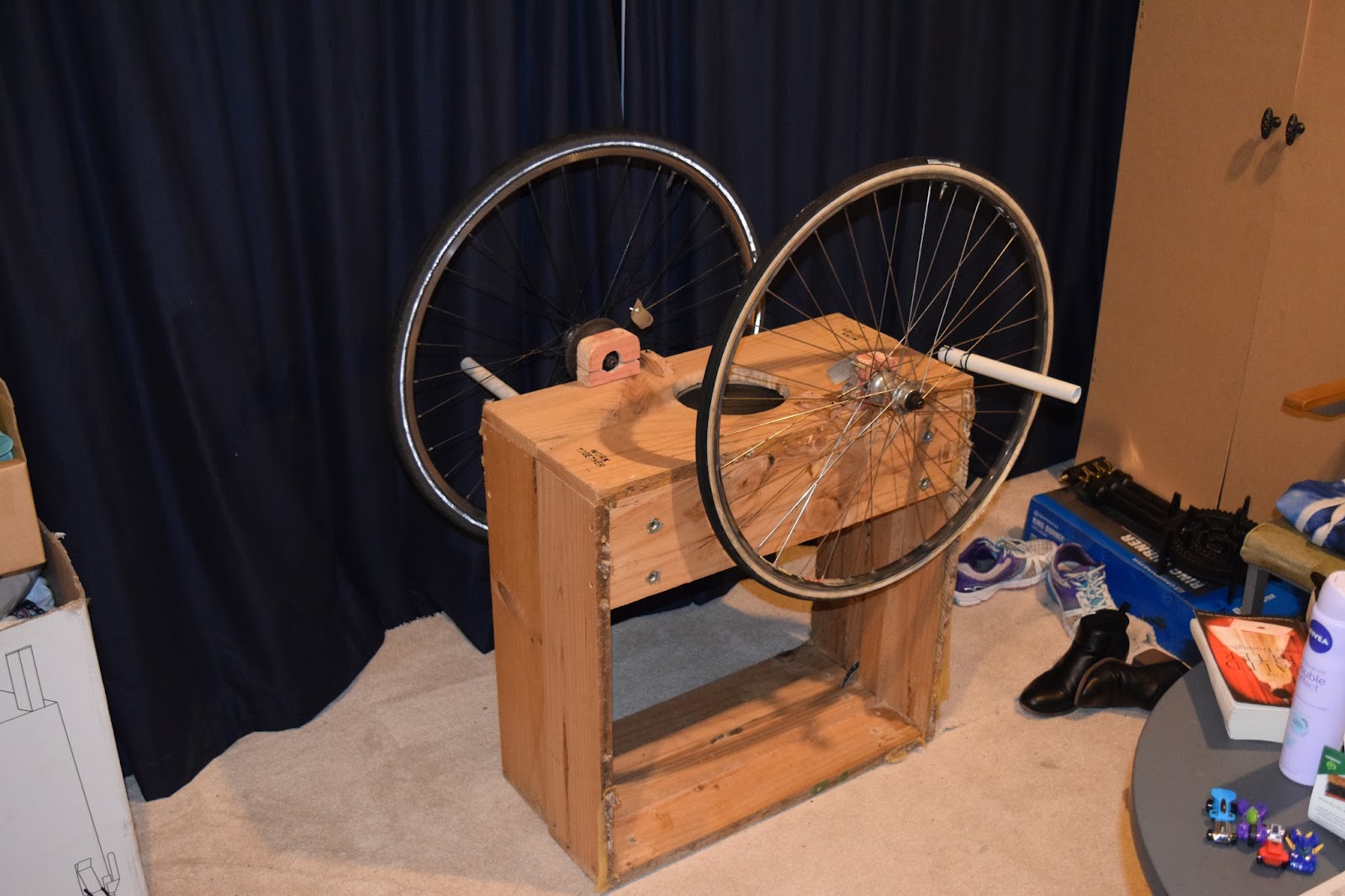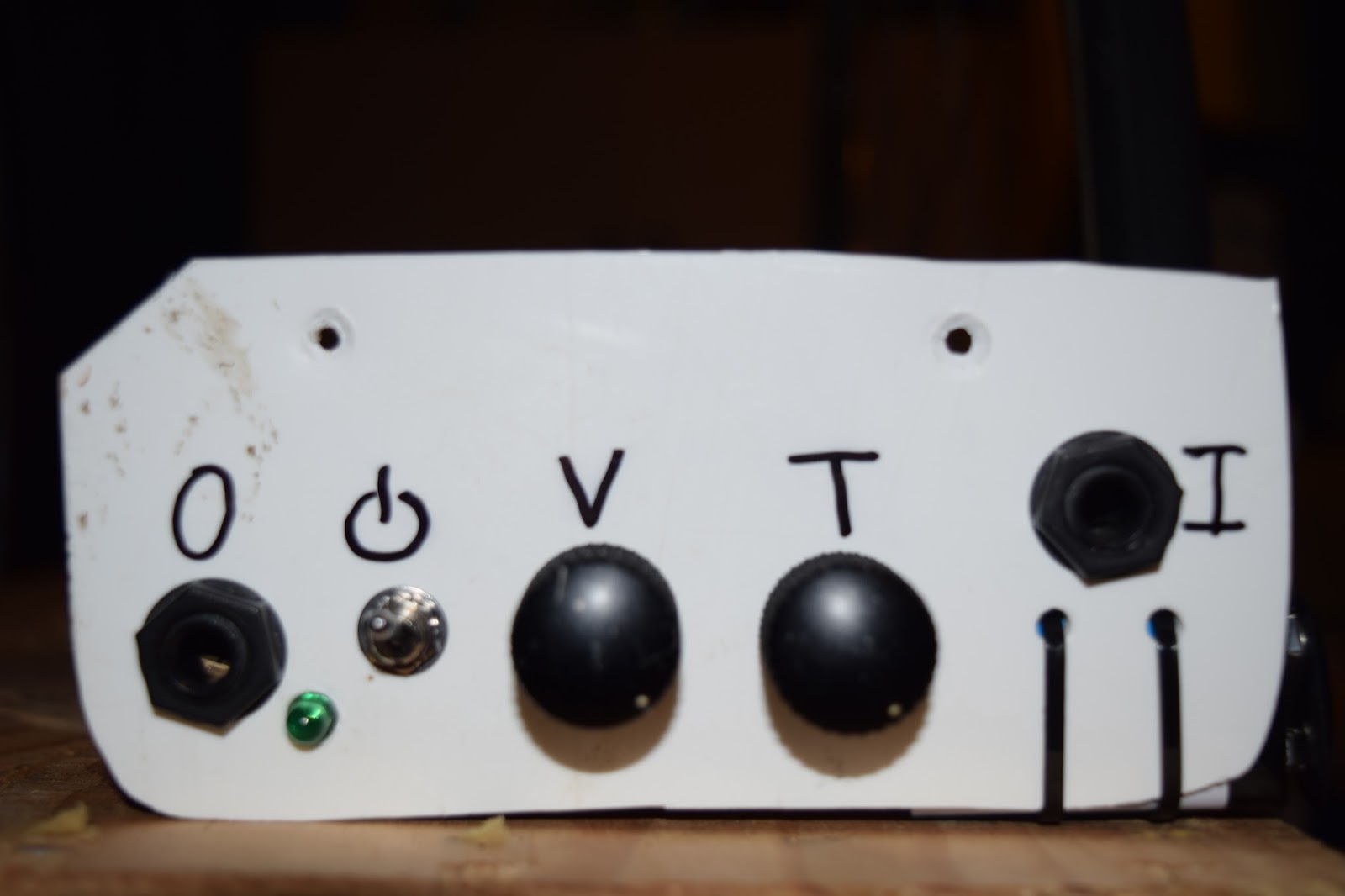WORK TOGETHER- an interactive audio installation
WORK TOGETHER is intended to encourage people to work together, and rewards them for doing so by playing a sound that is more than the sum of its parts. WORK TOGETHER is an audio installation built from recycled furniture, broken bicycle wheels, an old speaker, and an Arduino Nano.
Turning one wheel causes a note (always the same pitch) to slowly get louder. Spinning the other wheel does the same, although this second note is a major third above the first one. Spinning both wheels plays both notes, as well as five more, forming a dense major seventh chord. This pleasant chord rewards the two people for interacting and working together.
The speed of the wheels is detected by small momentary buttons which are hit by pieces of rubber on the wheels (shown above). The Arduino figures out how often this happens and generates a tone. Each wheel has it's own tone, and if both are spun together, the Arduino puts out a big major seventh chord. These signals are manually bit-banged out of the Arduino, run through a tone knob (pot+filter cap) and then amplified by an LM386 chip, which powers the speaker. All of this runs off a 9V battery.
Above: The control plate inside the box of the installation (shown detached) with an output jack, power switch and LED, volume knob, tone knob, and input jack respectively (from left to right). The cable ties hold the 9V battery in place.
Below: The Arduino nano and LM386 amplifier. These are not currently functioning properly.
The use of recycled materials is important in this installation because it means that the installation has no environmental footprint whatsoever. No extra energy was expended to produce the parts for this project, apart from maybe the electronics. Everything else was recycled (the wooden table used to be two couch squares), the wheels were headed for the landfill (the rims are too damaged to ever be roadworthy again) and the speaker was harvested from an old broken guitar amplifier. The important thing about building public installations from recycled materials is that it sets an example for what can be achieved purely with recycled materials. Many artists have already been concerned with this, and rather than avoiding it as passé or cliché I think it’s important to join them.
While the project does not address any particular ecological issue, what it does have is an essentially social focus which is critical for engaging ecological issues. In order to work together on tackling planetary issues of human consumption and pollution, we need to learn to work together as individual people first. The intention of this installation is to provide a fun and interesting experience that the user/interactor can take away and remember.
Link to video of the installation in action: https://www.youtube.com/watch?v=IGhwSP9-1rY
Thanks to:
Bike Barn on Tory Street for providing the wheels.
Chris Wratt for helping me get my head around scheduling on an Arduino.
My fiancé for tolerating this weird-looking this with wheels on in the living room.